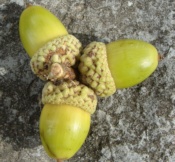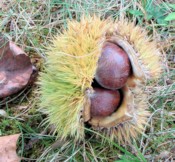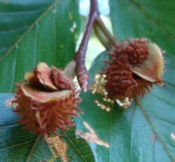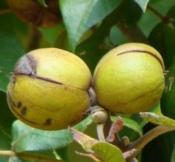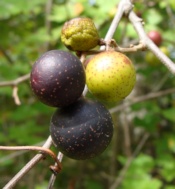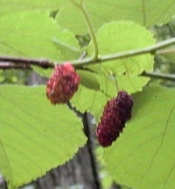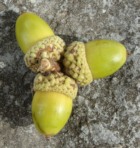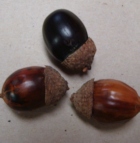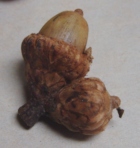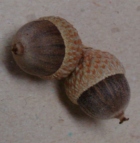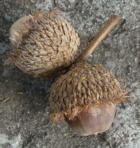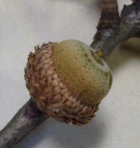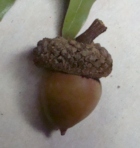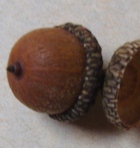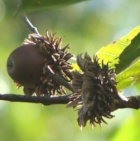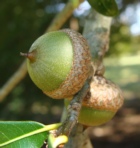Mast
As late summer transitions into fall, hikers along the Arboretum’s trails are likely to encounter numerous acorns, hickory nuts and other fall fruits. The quantity of these fruits, collectively referred to as mast, can vary strikingly from year to year. The term ‘mast’ comes from an ancient Anglo-Saxon word referring to nuts and fruits on the forest floor that provided food for hogs and other domesticated animals. Today the term is used more generally to refer to fruits produced by woody plants that provide food for wildlife.
A distinction is made between hard and soft mast. Hard mast consists of hard shelled fruits and seeds (e.g., acorns, hickory nuts, beechnuts, black walnuts, pine seeds) which are high in carbohydrates, fats, and proteins. Hard mast generally matures in the late summer and fall and may persist into winter months. It can provide an important source of food for wildlife when other food is scarce. Soft mast, on the other hand, refers to fleshy fruits (e.g., black cherries, blackberries, raspberries, muscadines, persimmons, serviceberries) having a high content of sugars, vitamins, and carbohydrates. Soft mass is usually unavailable during winter months, but it can play a role as a source of moisture for wildlife during dry periods and as a food source for migratory birds.
An intriguing aspect of hard mast, in particular, is the variability in the amount produced in any given year. While a number of theories have been advanced to explain this variability, none of the reasons for yearly fluctuations in mast production appear to be conclusive. Weather and local climate fluctuations, however, clearly play an important role. In high mast years, the abundant supply of available food in the fall and winter can contribute to wildlife survival and reproduction, while in lean years, wildlife may be forced to forage widely for food, and populations may decline.
Acorns
(Quercus species)
An acorn is the fruit of an Oak tree — a single-seeded nut covered by a woody cap (cupule). These fruits contain tannins that are toxic in large amounts to most domestic animals, with the notable exception of pigs. Acorns, however, are an important food for deer, bear, squirrels, turkeys, and other wildlife. In years when acorn production is low, wildlife populations may decline and foraging wildlife may create problems. When soaked to remove the tannins, acorns provided a food staple for Native Americans. They have also been used as a coffee substitute, when coffee was unavailable.
Please help us preserve our natural heritage!
No collecting of plant materials is permitted at the UT Arboretum.
